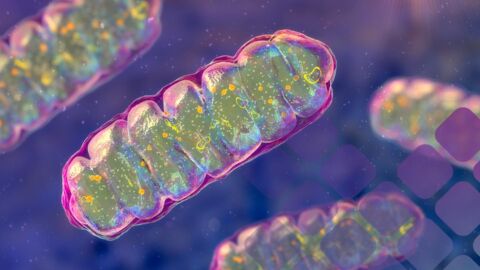My discovery about the role of abnormal organic acids from gastrointestinal microorganisms in human disease began as many discoveries do, as an accident.
In the 1960’s, a great deal of progress had been made in discovering the biochemical abnormalities that caused a number of diseases called “inborn errors of metabolism” using a technology called gas chromatography-mass spectrometry. These diseases included phenylketonuria (PKU), tyrosinemia, maple syrup urine disease and many others.
It seemed possible that this new testing called organic acid testing or metabolic profiling might be applied to any disease. However, thirty years later, very little progress had been made in solving the mystery of a number of diseases like autism, fibromyalgia, schizophrenia, and Alzheimer’s disease.
There is a long list of diseases in which a substantial number of patients excrete elevated microbial metabolites in the urine which have been detected by urine organic acid testing:
- Autism
- Attention deficit disorder (ADD)
- Rett’s syndrome
- Ulcerative colitis
- Seizures
- Depression
- Child Psychosis
- Fibromyalgia
- Chronic fatigue syndrome
- Pervasive developmental disorder (PDD)
- Colitis
- Schizophrenia
- Migraine headache
- Alzheimer’s disease
- Systemic Lupus Erythematosus (SLE)
- Obsessive compulsive disorder (OCD)
- Tourette’s syndrome
- Inflammatory bowel disease
- Down syndrome
- Crohn’s disease
Microbial Ecology of the GI Tract
The number of microorganisms in the GI tract approaches the total number of cells in the body. Approximately 500 species of bacteria are present, of which 30-40 species of bacteria predominate, including several species of yeast and fungi.
The greatest number of species are anaerobic or facultative anaerobes. Yeast/fungi and Clostridia species are widely known to accompany the use of broad spectrum antibiotics. Furthermore, recent research indicates that the growth of certain Candida types is markedly stimulated by antibiotic addition to the culture media.
Books like The Yeast Connection and Yeast Syndrome have spread the knowledge about the health effects of Candida to the general public, but are widely ignored by a large segment of the medical community.
Detecting GI Microbial Overgrowth (Dysbiosis)
I became interested in using gas chromatography-mass spectrometry (GC/MS) to detect abnormal microbial metabolites when I worked at the Center for Disease Control (CDC). At CDC, GC/MS was used to identify the species of pure cultures of isolated bacteria. I wondered why you couldn’t directly test human body fluids directly for products of microorganisms.
Later, while working at Children’s Mercy Hospital, the pediatric hospital for the University of Missouri at Kansas City Medical School, I became interested in the role of abnormal urinary metabolites detected by GC/MS while evaluating two brothers who had autism as well as occasional severe muscle weakness.
Since some inborn errors of metabolism are associated with muscle weakness, I was really looking for metabolites characteristic of genetic diseases which were all negative. Instead, I noticed that several unusual compounds were consistently elevated in urine samples. None were adequately described in the medical literature. Colleagues in the field of metabolic diseases said they were probably from gut flora (microorganisms) and were therefore unimportant. Since several of these compounds were analogs (or altered forms) of normal Krebs cycle compounds, I thought these compounds might be significant, perhaps as anti-metabolites.
During the same time period, I was testing the culture media of a large number of different yeast and bacteria strains from the human gastrointestinal tract in order to find out which compounds in the human might be derived from the yeast and bacteria in the gastrointestinal tract.
Yeast Metabolites in the Urine of Children with Autism
The compound that led to the discovery of yeast as the source of many of these compounds in the urine of autistic children was tartaric acid.
The brothers with autism and severe muscle weakness had extremely high values of tartaric acid in their urine. Another child with autism had a urine value of tartaric acid 600 times that of normal children.
The only source of tartaric acid is yeast. This compound forms a sludge in the wine brewing process and has to be removed. Wine is sugar-water fermented by yeast (Saccharomyces cerevisiae) to alcohol and other yeast products. Humans do not produce this chemical.
When I pulled the medical charts of several other children with autism, they had similar abnormalities and immediately I wondered about a possible causal connection. The next step seemed obvious. If these compounds were from yeast and were causing some of the symptoms of autism, antifungal drugs which kill yeast should reduce some of the symptoms of autism. However, the two brothers did not receive antifungal therapy until nearly a year later.
At nearly the same time, a two-year-old boy was currently being evaluated for autism in the neurology department at the children’s hospital where I worked and I had just done the urine organic acid test. The child had been developing normally up to about 18 months of age and had a vocabulary of about 200 words.
He was treated several times for ear infections with antibiotics and developed thrush (a Candida or yeast infection of the mouth and tongue). His behavior deteriorated quickly after that. He lost all speech, became extremely hyperactive, woke up all night long, lost eye contact with his parents and was diagnosed with autism.
This pattern of normal development and regression associated with antibiotics is extremely common in autism and is especially common in males with autism (about a 20/1 male/female ratio). His organic acids were very elevated, which I thought was due to the yeast, including tartaric acid. The neurologist at the hospital would not prescribe the antifungal drug Nystatin for the child so the parents and I convinced their family physician to prescribe it.
The child’s eye contact returned by the following day and the elevated organic acids decreased markedly, although it took over 60 days for the urine tartaric acid to return to the normal range (Figure 1).
At day zero (Figure 1), the day that the child had the organic acid test done, the tartaric acid value in urine was over 300 mmol/mol creatinine, a very high value–about twenty times the normal value. (Most chemicals measured in urine are divided by the urine creatinine concentration to compensate for different amounts of fluid intake in different individuals.) Following the treatment with the Nystatin, the level of the tartaric acid decreased considerably and continued to decrease as the Nystatin was continued.
Within a couple of days of starting the antifungal drug Nystatin, the child–who had lost most of normal development–began to improve and eye contact came back. His extreme hyperactivity began to go away and he began to have a greater amount of focus. The sleep pattern improved as well. Nystatin is an antifungal drug which indicated to me that a yeast or fungus (these terms are somewhat interchangeable in that they are very closely related biologically) was causing the secretion of this compound in the intestinal tract.
After 68 days the child’s mother started running out of Nystatin and began giving only half doses so that she didn’t run out of it. During that time the tartaric acid starting increasing. When she got the Nystatin prescription refilled and restored the full dose of Nystatin, the tartaric acid decreased.
What this indicated to me was that the Nystatin was causing a marked reduction in this urine tartaric acid. The other significant finding was that even after two months of Nystatin, the biochemical abnormality would reappear within a short time of stopping the antifungal drug.
I have now detected this same phenomenon in hundreds of other cases. Even after six months of antifungal treatment, there is often a biochemical “rebound” and loss of improvements after discontinuing antifungal therapy. This rebound also occurs after other antifungal drugs as well.
Several explanations are possible for this phenomenon:
- Because of one or more defects in the immune system such as IgA deficiency, IgG deficiency, or severe combined immunodeficiency disease (SCID) which are found in most children with autism, the yeast, which are everywhere in our environment including the food we eat, repopulate the intestinal tract very rapidly.
- The yeast are very resistant and have not been completely eliminated even after six months of antifungal therapy
- The yeast have genetically transformed some of the human cells that line the intestinal tract so that some of the human cells now contain yeast DNA. These genetically transformed human cells produce both yeast and human products and are somewhat sensitive to antifungal drugs but are not killed by them and produce yeast products whenever antifungal drugs are absent.
- Some of the yeast are hidden in recesses of the intestinal tract or in the deeper layers of the mucosa that lines the intestine where they are relatively safe from the drug. Although their numbers are small, they readily repopulate the intestine after antifungals are stopped.
- In addition to the immune system taking inventory of its own cells, it seems increasingly likely that the immune system also takes an inventory of bacteria and yeast cells present in the intestinal tract soon after birth. This inventory is performed by a group of cells called the CD5+ B-cells, which are among the very first immunological cells to appear in the developing embryo and appear to play a role in tolerance to intestinal microorganisms in postnatal life. These cells may play a role in regulating the secretion of IgA, the antibody class that is secreted into the intestinal tract and which may select which microorganisms are tolerated in the intestinal tract. Furthermore, the eradication of normal flora especially when antibiotics are administered repetitively during infancy may cause the CD5+ cells to reject these normal organisms at a later age. Any cells that are on this early inventory may be awarded immune tolerance and will not be attacked later on by the immune system. Either antibiotic use in infancy or yeast infection of the mother during pregnancy may result in later immune tolerance to yeast.
Response of Children with Autism to Antifungal Therapy
Improvements commonly cited by parents of autistic children treated with antifungal therapy include: decreased hyperactivity, more eye contact, increased vocalization (more words and more usage), better sleep patterns, better concentration, increased imaginative play, reduced stereotypical behaviors (such as spinning objects), and better academic performance. Two children with autism treated with a combination of antifungal therapy, EPD treatment for food allergies, and gluten and casein free diet have completely recovered from autism.
More than 1000 children with autism have been treated with a wide variety of antifungal agents such as Nystatin, Lamisil, Sporanox, Nizoral, Diflucan, caprylic acid, grapefruit seed extract, and garlic extract with good clinical response in perhaps 80-90%. A survey of parents of autistic children by Rimland reports that antifungal therapy is ranked the most effective (by a wide margin) of all drug therapies used for the reduction of autistic symptoms.
Molecular Basis of Tartaric Acid Toxicity
The abnormal metabolites derived from yeast were first discovered in two brothers with autism. In addition to their autism, these brothers had a muscle weakness that was so severe that sometimes they could not even stand up. A neurologist colleague, Enrique Chaves, MD, told me that virtually all the autistic children he examined had hypotonia.
Both of these brothers excreted high amounts of tartaric acid in the urine. Biopsy of the muscle and examination by electron microscopy revealed normal structural features except for an unexplained “granularity.” Electromyography, EEG’s, brain scans, and nerve conduction velocities were all normal.
A toxicology manual indicates that tartaric acid is a highly toxic substance. As little as 12 gm has caused human fatality with death occurring from 12 hours to 9 days after ingestion. Gastrointestinal symptoms were marked (violent vomiting and diarrhea, abdominal pain, thirst) and followed by cardiovascular collapse and/or acute renal failure. A gram is approximately the weight of a cigarette.
This compound especially damages the muscles and the kidney and may even cause fatal human nephropathy (kidney damage) which was of interest to me, since the two brothers with autism had the extreme muscle weakness as well as evidence of impaired renal function.
A young Korean child with autism had a value of 6000 mmol/mol creatinine, a value that is about 600 times the median normal value. Assuming that the yeast in the intestine of the child were producing tartaric acid at a constant rate, this child would be exposed to 4.5 grams per day of tartaric acid, over one-third of the reported lethal dose of tartaric acid! (The child’s value returned to normal after a few weeks of antifungal treatment.)
Tartaric acid is an analog (a close chemical relative) of malic acid (Figure 2). Malic acid is a key intermediate in the Krebs cycle, a biochemical process used for the extraction of most of the energy from our food. Presumably tartaric acid is toxic because it inhibits the biochemical production of the normal compound, malic acid (Figure 3). Tartaric acid is a known inhibitor of the Krebs cycle enzyme fumarase which produces malic acid from fumaric acid.
Yeast Byproducts, Malic Acid Supplementation, & Fibromyalgia
Interestingly, I have found that tartaric acid and/or other yeast byproducts are also elevated in urine samples of adults with the disorder fibromyalgia, a debilitating disease associated with muscle and joint pain, depression, foggy thinking, and chronic fatigue. (Dr. Kevorkian has assisted in the suicide of two people with this disorder, which is tragic since a simple antiyeast treatment may help relieve the symptoms of this disorder.)
A large percentage of patients with fibromyalgia respond favorably to treatment with malic acid which is present in health food supplements such as Fibrocare and Supermalic. I presume that supplements of malic acid are able to overcome the toxic effects of tartaric acid by supplying deficient malic acid.
Treatment with the antifungal drug Nystatin kills the yeast and values for tartaric acid steadily diminish with antifungal treatment. Fifty percent of patients with fibromyalgia often suffer from hypoglycemia even though their diet may have adequate or even excessive sugar.
One of the reasons for the hypoglycemia may be due to the inhibition of the Krebs cycle by tartaric acid. The Krebs cycle is the main provider of raw materials such as malic acid that can be converted to blood sugar (Figure 3) by the process called gluconeogenesis when the body uses up its glucose supply.
If sufficient malic acid cannot be produced, the body cannot produce the sugar glucose, which is the main fuel for the brain. The person with hypoglycemia feels weak and their thinking is foggy because there is insufficient fuel for their brain. Of course, consumption of sugar may provide short-term relief but which also stimulates yeast overgrowth and within a short time symptoms are even worse.
Arabinose, Yeast, Autism, Alzheimer’s Disease & Schizophrenia
Arabinose is a five carbon sugar with an aldehyde function called an aldose, which is frequently elevated in autism.
In some children with autism, arabinose concentrations may exceed 50 times the upper limit of normal. A scattergram of urine arabinose values comparing normal and autistic children in the same age range is given below (Figure 4).
The exact biochemical role of arabinose is unknown, but a closely related yeast alcohol arabitol has been used as a biochemical indicator of invasive candidiasis. We have never found elevated arabitol in any of the urine samples tested and we have not found arabinose in the culture media of multiple isolates of Candida albicans isolated from stool samples of autistic children (unpublished data).
We suspect that arabitol produced by yeast in the intestinal tract is absorbed into the portal circulation and then converted to arabinose by the liver. Hypoglycemia occurs in inborn errors of fructose metabolism in which fructose inhibits gluconeogenesis and it is possible that children with autism might be deficient in one or more enzymes involved in the metabolism of pentoses. Elevated protein-bound arabinose has been found in the serum glycoproteins of schizophrenics and in children with conduct disorders and alteration of protein function by arabinose is another mechanism by which arabinose might effect biochemical processes.
Women with vulvovaginitis due to Candida were found to have elevated arabinose in the urine; restriction of dietary sugar brought about a dramatic reduction in the incidence and severity of the vulvovaginitis. Thus, one of the mechanisms of action of antifungal drug therapy for autism might be to reduce the concentration of an abnormal carbohydrate produced by the yeast that can not be tolerated by the child with defective pentose metabolism. Arabinose tolerance tests should be able to rapidly determine if such biochemical defects are present in children with autism.
Arabinose, Pentosidine, Protein Modification & Vitamin Deficiencies
Arabinose, a sugar aldehyde or aldose, reacts with the epsilon amino group of lysine in a wide variety of proteins and may then form cross-links with arginine residues in an adjoining protein, thereby cross-linking the proteins and altering both biological structures and functions of a wide variety of proteins.
This adduct of arabinose, lysine, and arginine is called a pentosidine (Figure 5). The tissue concentration of this adduct is almost linearly related to age (Figure 6). The epsilon amino group of lysine is a critical functional group of many enzymes to which pyridoxal (vitamin B-6), biotin, and lipoic acid are covalently bonded during coenzymatic reactions; the blockage of these active lysine sites by pentosidine formation may cause functional vitamin deficiencies even when nutritional intake is adequate. In addition, this epsilon amino group of lysine may also be important in the active catalytic site of many enzymes.
Pentosidines, Autism, Alzheimer’s & Neurofibrillary Tangles in the Brain
Protein modification caused by pentosidine formation is associated with crosslink formation (Figure 7), decreased protein solubility, and increased protease resistance. The characteristic pathological structures associated with Alzheimer disease contain modifications typical of pentosidine formation. Specifically, antibodies against pentosidine immunocytochemically label neurofibrillary tangles and senile plaques in brain tissue from patients with Alzheimer disease.
In contrast, little or no staining with anti-pentosidine antibodies is observed in apparently healthy neurons of the same brain. The modification of protein structure and function caused by arabinose could account for the biochemical and insolubility properties of the lesions of Alzheimer disease through the formation of protein crosslinks.
Since the process of pentosidine formation is an oxidative one, the use of antioxidants as well as antifungal therapy appears to be a promising therapy for Alzheimer’s disease. Glutathione has been reported to inhibit pentosidine formation. Supplementation with the vitamins biotin, pyridoxal (B-6), and lipoic acid (whose function at protein epsilon amino groups may be blocked by pentosidines derived from arabinose) might also be beneficial because of functional deficiencies due to pentosidine formation (Figure 8).
Not surprisingly, neurofibrillary tangles similar to those found in the brains of Alzheimer’s victims have also been reported in the brain of an autistic person at autopsy. It has been reported that frequent urinary tract infections and high amounts of circulating immune complexes are associated with more severe Alzheimer disease. The use of antibiotics to treat urinary tract infections would of course lead to yeast overgrowth of the gastrointestinal tract.
Summary
Elevation of yeast metabolites such as tartaric acid and arabinose are found in many of the same disorders and are even more common in autism, SLE, Alzheimer’s disease, fibromyalgia, attention deficit hyperactivity, and chronic fatigue syndrome. The arabinose may interfere with gluconeogenesis and also may through pentosidine formation significantly alter protein structure, transport, solubility, and enzymatic activity as well as triggering autoimmune reactions to the modified proteins.
The finding of pentosidine in the neurofibrillary tangles of Alzheimer’s brains and its absence from normal areas of the brain may indicate a direct role of a yeast byproduct in accelerating the normal aging process. Tartaric acid from yeast overgrowth has a direct toxic effect on muscles and is an inhibitor of a key Krebs cycle enzyme that supplies raw materials for gluconeogenesis and offers an explanation for many of the symptoms of fibromyalgia.











